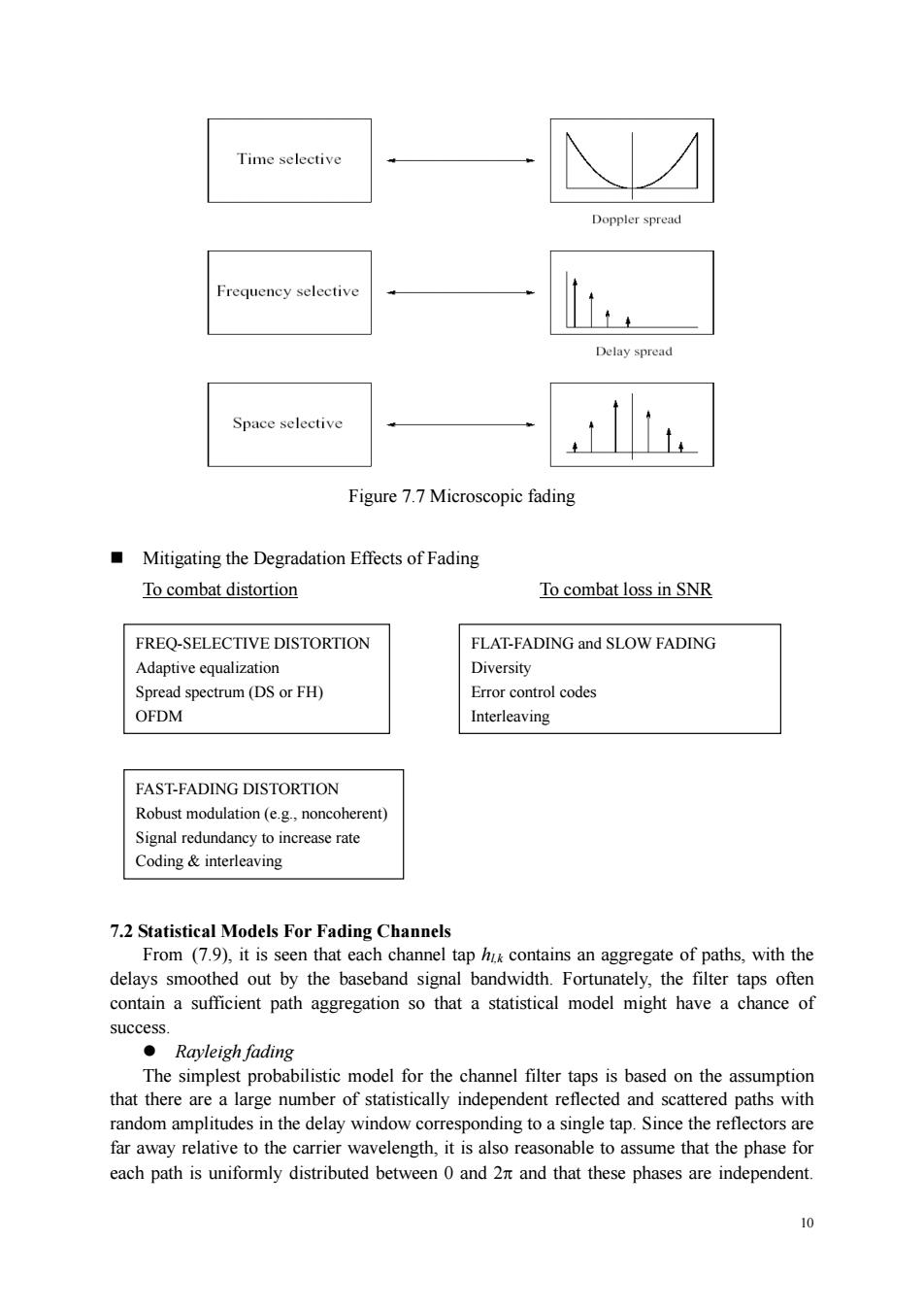正在加载图片...

Time selectiv Doppler sprea Frequency selective Delay spread Space selective Figure 7.7 Microscopic fading Mitigating the Degradation Effects of Fading To combat distortion To combat loss in SNR FREO-SELECTIVE DISTORTION FLAT-FADING and SLOW FADING Adaptive equalization Diversity ead spectrum(DS or FH) Error control codes OFDM Interleaving FAST-FADING DISTORTION Signal undancy to ncrease rat 7.2 Statistical Models For Fading Channels From (7.9),it is seen that each channel tap h contains an aggregate of paths,with the delays smoothed out by the baseband signal bandwidth.Fortunately,the filter taps often contain a sufficient path aggregation so that a statistical model might have a chance of ●Rayleigh fading The simplest probabilistic model for the channel filter taps is based on the assumption that there are a large number of statistically independent reflected and scattered paths with oapntudes in the delay window corresponding to a single tap.Since the renec far away relative to the carrie onable to ass ume that the phase for each path is uniformly distributed between 0 and 2 and that these phases are independent.10 Figure 7.7 Microscopic fading Mitigating the Degradation Effects of Fading To combat distortion To combat loss in SNR 7.2 Statistical Models For Fading Channels From (7.9), it is seen that each channel tap hl,k contains an aggregate of paths, with the delays smoothed out by the baseband signal bandwidth. Fortunately, the filter taps often contain a sufficient path aggregation so that a statistical model might have a chance of success. Rayleigh fading The simplest probabilistic model for the channel filter taps is based on the assumption that there are a large number of statistically independent reflected and scattered paths with random amplitudes in the delay window corresponding to a single tap. Since the reflectors are far away relative to the carrier wavelength, it is also reasonable to assume that the phase for each path is uniformly distributed between 0 and 2 and that these phases are independent. FREQ-SELECTIVE DISTORTION Adaptive equalization Spread spectrum (DS or FH) OFDM FLAT-FADING and SLOW FADING Diversity Error control codes Interleaving FAST-FADING DISTORTION Robust modulation (e.g., noncoherent) Signal redundancy to increase rate Coding & interleaving